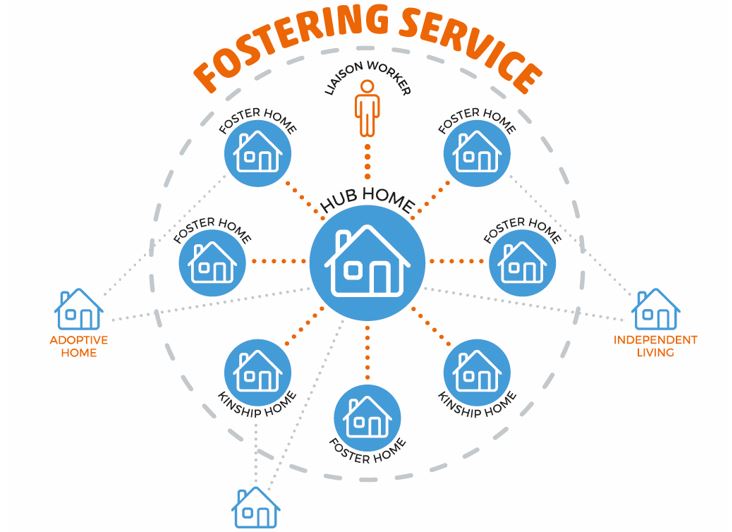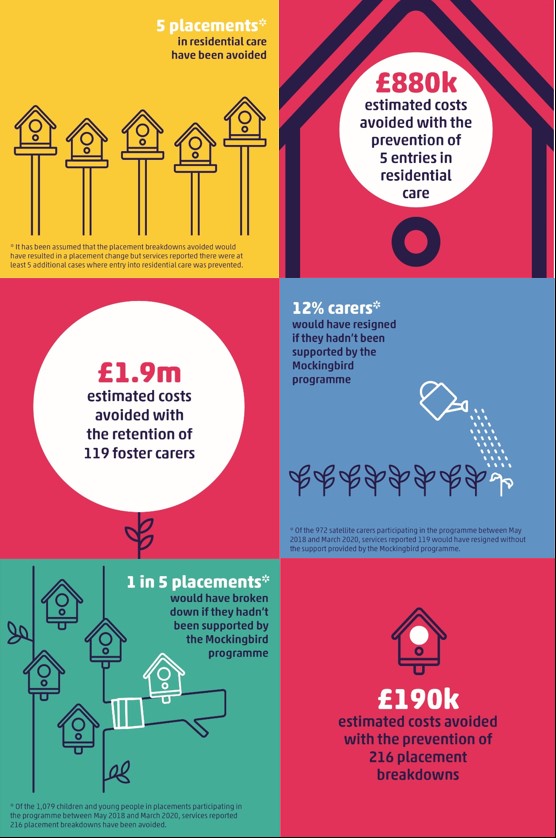Mockingbird
Mockingbird is an extended family model which was conceived in Washington State USA in 2004 by The Mockingbird Society.
The aim was to have a positive impact on the public perception of children and young people who were fostered, and to work with fostering families and child placing agencies to improve outcomes for children and fostering households.
The Mockingbird family model was introduced to the UK in 2015- 2016 with The Fostering Network piloting the programme in England with initially 8 fostering services with the Department for Education’s Children’s Social Care Innovation Programme and The Mockingbird Society in America. As of May 2019 there were 26 Mockingbird partner services; 18 of which had at least one established constellation and 8 services were in the implementation stages of the programme.
The underpinning principals of Mockingbird are:
- Community based care – All children and young people deserve to live in settings that reflect their need for age appropriate freedom and autonomy while ensuring their safety and the safety of the community. They also deserve to grow up in a community that is familiar to them, and close to their birth family members if appropriate.
- Unconditional care – All children and young people deserve a safe, warm nurturing environment in which they can thrive. This approach is focused on social learning and the concept of the whole child with a lifelong perspective.
- Normalisation of care – Children and young people in foster care need to receive the same opportunities and support as well as facing the same challenges as their peers so they can learn and develop and make full use of opportunities available to them.
- Continuity of care – All children and young people benefit from continuity in their lives; same community, same school, same sports, arts and leisure opportunities.
- Cultural relevancy – Children do best when connected with the culture they identify with. Children and young people say they feel more comfortable, and research suggests they do best when, they are connected to their cultures and live in families that reflect their ethnicity and values.
- Birth family viewed as partners and future support – The Mockingbird Family Model supports practice that enables children and young people to receive age appropriate and accurate information about their past and to learn the skills and boundaries necessary to establish and maintain safe relationships with their birth family into the future.
- Foster care support – Take good care of the adults who take good care of children. It is essential to take good care – with training, practical and emotional support and supervision – of the foster carers who take good care of children and young people.
In 2019 the Council was successful in its application to implement Mockingbird as part of the Department of Education’s (DfE) Supporting Families, Investing in Practice Programme. The Mockingbird Model delivers foster care using an extended family model which centres on a constellation where one foster home acts as a hub, offering planned and emergency sleepovers and short breaks, advice, training and support, to six to 10 satellite households.

